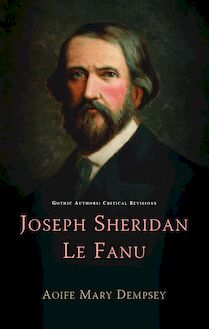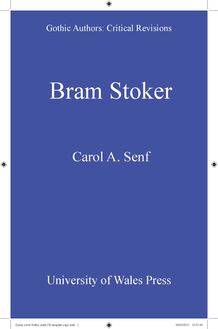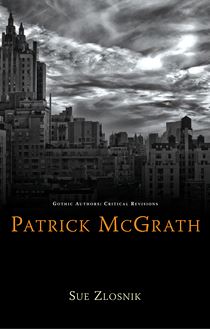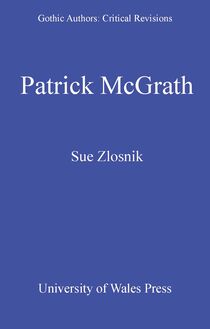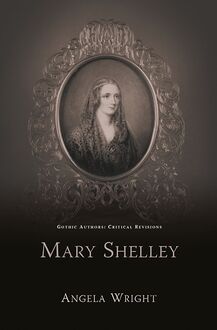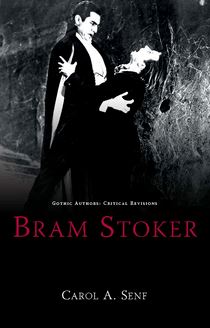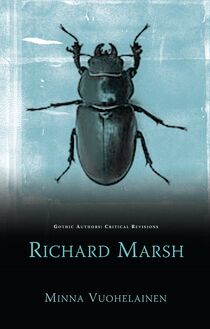-
 Univers
Univers
-
 Ebooks
Ebooks
-
 Livres audio
Livres audio
-
 Presse
Presse
-
 Podcasts
Podcasts
-
 BD
BD
-
 Documents
Documents
-
- Cours
- Révisions
- Ressources pédagogiques
- Sciences de l’éducation
- Manuels scolaires
- Langues
- Travaux de classe
- Annales de BEP
- Etudes supérieures
- Maternelle et primaire
- Fiches de lecture
- Orientation scolaire
- Méthodologie
- Corrigés de devoir
- Annales d’examens et concours
- Annales du bac
- Annales du brevet
- Rapports de stage
La lecture à portée de main
Vous pourrez modifier la taille du texte de cet ouvrage
Découvre YouScribe en t'inscrivant gratuitement
Je m'inscrisDécouvre YouScribe en t'inscrivant gratuitement
Je m'inscrisEn savoir plus
Vous pourrez modifier la taille du texte de cet ouvrage
En savoir plus

Description
Sujets
Informations
| Publié par | University of Wales Press |
| Date de parution | 01 novembre 2010 |
| Nombre de lectures | 0 |
| EAN13 | 9781783164318 |
| Langue | English |
Informations légales : prix de location à la page 0,0400€. Cette information est donnée uniquement à titre indicatif conformément à la législation en vigueur.
Extrait
BRAM STOKER
S ERIES P REFACE
Gothic Authors: Critical Revisions is dedicated to publishing innovative introductory guides to writers of the Gothic. The series explores how new critical approaches and perspectives can help us to recontextualize an author s work in a way that is both accessible and informative. The series publishes work that is of interest to students of all levels and teachers of the literary Gothic and cultural history.
S ERIES E DITORS
Andrew Smith, University of Glamorgan
Benjamin Fisher, University of Mississippi
E DITORIAL B OARD
Kent Ljungquist, Worcester Polytechnic Institute, Massachusetts
Richard Fusco, St Joseph s University Philadelphia
David Punter, University of Bristol
Angela Wright, University of Sheffield
Jerrold E. Hogle, University of Arizona
GOTHIC AUTHORS: CRITICAL REVISIONS
Bram Stoker
Carol A. Senf
Carol A. Senf, 2010
All rights reserved. No part of this book may be reproduced in any material form (including photocopying or storing it in any medium by electronic means and whether or not transiently or incidentally to some other use of this publication) without the written permission of the copyright owner except in accordance with the provisions of the Copyright, Designs and Patents Act 1988. Applications for the copyright owner s written permission to reproduce any part of this publication should be addressed to the University of Wales Press, 10 Columbus Walk, Brigantine Place, Cardiff, CF10 4UP.
www.uwp.co.uk
British Library CIP Data A catalogue record for this book is available from the British Library.
ISBN 978-0-7083-2385-4 (hardback) ISBN 978-0-7083-2306-9 (paperback) e-ISBN 978-1-78316-431-8
The right of Carol A. Senf to be identified as author of this work has been asserted by her in accordance with sections 77 and 79 of the Copyright, Designs and Patents Act 1988.
To Marlie Ann Senf(31 October 1916), my mother,
and
Andrew Joseph Senf (7 December 2008), my nephew,
the oldest and youngest members of my family
A CKNOWLEDGEMENTS
Although it has become something of a clich to say that it takes a village to raise a child , the same thing is true of producing a book. Without the help and support of numerous people around the world, this book on Stoker would never have been born, let alone come to maturity.
One of the most important people is Professor Andrew Smith at the University of Glamorgan, and one of the editors of the series, Gothic Literary Studies, as well as a scholar whose work on the Gothic and on Stoker I have admired for a number of years. When Smith invited me to contribute a book on Bram Stoker and the Gothic to the series, Gothic Authors: Critical Revisions, I literally leapt at the opportunity. It was, in the words of Don Corleone, an offer I couldn t refuse . After studying Stoker off and on for almost forty years, I was delighted to have an opportunity to pull together many of my thoughts on Stoker, in particular my ideas regarding his exploration of multiple genres.
While Smith provided the initial idea, the book would never have come together without the help of numerous colleagues and students at the Georgia Institute of Technology, with whom I have shared the occasional Stoker moment. Among the most important of those colleagues are Ken Knoespel, chair of my home unit, the School of Literature, Communication and Culture, and Jay Telotte, director of Undergraduate Studies, who allowed me a semester away from teaching to put the finishing touches on this book. Nor could I have pulled this book together without the help of the Georgia Tech Library who cheerfully located books that I needed.
Another supportive group is the members of the Canadian chapter of the Transylvanian Society of Dracula (TSD) who continue to remind me that Dracula and Stoker matter. In 2007 when I attended the TSD Symposium and Dracula Tour through Romania, I had the opportunity to meet people from all over the world who care about Dracula and Stoker s other works. Among the most significant were Leslie Klinger, who was then preparing his annotated edition of Dracula, and the always inspiring Elizabeth Miller, author of a number of scholarly works on Dracula. Even though Stoker never went to Transylvania, the symposium and tour allowed me to meet people from all walks of life who care about Dracula.
Last but not least I must thank my family who have all learned to tolerate if not appreciate my interest in Stoker. My husband, Jay Farlow, even accompanied me on my 2007 trek to Transylvania. And my children, Jeremy and Andy, now all grown up, have learned not to roll their eyes and grimace whenever Stoker s name comes up.
Carol A. Senf
Atlanta
C ONTENTS
Acknowledgements
Introduction: Tracing the Gothic through Stoker s Short Stories
1 Gothic Material in The Snake s Pass, The Watter s Mou and The Shoulder of Shasta
2 Dracula: Stoker s Gothic Masterpiece
3 Ongoing Work with the Gothic in Miss Betty, The Mystery of the Sea and The Jewel of Seven Stars
4 Gothic-tinged Romances: The Man, Lady Athlyne and The Lady of the Shroud
5 Stoker s Return to the Gothic in Famous Impostors and The Lair of the White Worm
Notes
Bibliography
Introduction: Tracing the Gothic through Stoker s Short Stories
When Bram Stoker died in 1912, his obituary in The Times described him as the master of a particularly lurid and creepy kind of fiction and, although he wrote eighteen books plus numerous articles and short stories, he is remembered today primarily for Dracula. 1
This study explores Stoker as a Gothic writer, and this chapter introduces themes and ideas he develops in shorter works. While Stoker wrote most of his novels after 1902 when the Lyceum s collapse allowed him to write full time, Stoker began by writing short fiction and included some of these stories in three collections: Under the Sunset (1882), Snowbound (1908) and Dracula s Guest (1914). 2 Others remain as independent works. This chapter explores the short works in chronological order to demonstrate Stoker s development and to explore Gothic themes and ideas.
The Dublin years
After graduating from Trinity College in 1868, Stoker entered the Anglo-Irish civil service at Dublin Castle. References in Personal Reminiscences of Henry Irving reveal ambivalence about the work, financial worries and enthusiasm for writing: journalism, a dry-as-dust book on The Duties of Clerks of Petty Sessions and short fiction. 3
Four works which Stoker wrote while still in Dublin deserve attention for their Gothic elements: The Crystal Cup (London Society, 22 September 1875), The Primrose Path. A Serial in Ten Chapters (The Shamrock, 6 February-6 March 1875), Buried Treasures. A Serial in Four Chapters (The Shamrock, 13 and 20 March 1875) and The Chain of Destiny. A Serial in Ten Chapters (The Shamrock, 1-22 May 1875).
The Crystal Cup
Stoker s first published story often appears in collections characterized as weird, mysterious or horror. 4 A story about the creative process, it includes a medieval setting and a tyrannical ruler who imprisons people at will. Although Death lurks in the background, The Crystal Cup focuses on art and its power over human beings. 5
Divided into three sections, it begins with the first-person account of an imprisoned artist. The second section describes the Feast of Beauty, established earlier by a mysterious royal master (p. 150) who controls the contest. An outsider who scales the walls to observe the feast narrates section three. When the artist s beloved sings, one of the king s retainers observes: Ah! I fear me some evil: the nearer the music approaches to perfection the more rapt he becomes. I dread lest a perfect note shall prove his death-call (p. 157), and the story concludes with death for monarch and singer. The deaths are not terrifying, but the mystery surrounding them combines with its medieval setting and tyrannical ruler to make the story Gothic.
The Primrose Path
Stoker s second published story, The Primrose Path , is decidedly more Gothic. 6 Maunder describes it as a temperance novel (p. 29) and an example of Urban Gothic or the intrusion of the monstrous closer to home (p. 30). Like Stoker s later fiction, it introduces Gothic elements into a realistic story and skillfully blends them, as Maunder observes:
In this sense, the novel that points us towards the monstrous and the supernatural can also be described as realist in that it gives detailed attention both to individual characters and their environment; that we are presented with largely credible circumstances and events; and that Stoker deals with contemporary social problems. (p. 37)
Dalby s introduction also examines realistic elements, describing it as a moral tract on the degradation and evils of alcoholism . 7 The protagonist, Jerry O Sullivan, was a prosperous man in his line of life (p. 17), and the three Dublin chapters are pleasant though they foreshadow the dark conclusion. Chapter I (subtitled A Happy Home ) concludes: Jerry O Sullivan had a sweet wife and a happy home. Prosperity seemed to be his lot in life (p. 23). Offered an attractive job at a London theatre, he takes his wife Katey and children there against the advice of friends and the wishes of his wife and his mother. He immediately falls into bad company, becomes a drunkard and loses his job and his family s trust. Finally, in a drunken rage, he murders Katey before their horrified children and, immediately remorseful, cuts his own throat.
Although The Primrose Path is a plausible story about alcoholism and domestic violence, it is hard not to notice the Gothic elements. Indeed, while the O Sullivans have a support network in Ireland, they confront Gothic villains in London. Arriving at the theatre, Jerry discovers the company working on Faust. 8 Almost immediately Mons, the actor playing Mephistopheles, invites him to a tavern where he meets the work s most Gothic figure, Grinnell, the barkeeper whose repulsive f
-
 Univers
Univers
-
 Ebooks
Ebooks
-
 Livres audio
Livres audio
-
 Presse
Presse
-
 Podcasts
Podcasts
-
 BD
BD
-
 Documents
Documents
-
Jeunesse
-
Littérature
-
Ressources professionnelles
-
Santé et bien-être
-
Savoirs
-
Education
-
Loisirs et hobbies
-
Art, musique et cinéma
-
Actualité et débat de société
-
Jeunesse
-
Littérature
-
Ressources professionnelles
-
Santé et bien-être
-
Savoirs
-
Education
-
Loisirs et hobbies
-
Art, musique et cinéma
-
Actualité et débat de société
-
Actualités
-
Lifestyle
-
Presse jeunesse
-
Presse professionnelle
-
Pratique
-
Presse sportive
-
Presse internationale
-
Culture & Médias
-
Action et Aventures
-
Science-fiction et Fantasy
-
Société
-
Jeunesse
-
Littérature
-
Ressources professionnelles
-
Santé et bien-être
-
Savoirs
-
Education
-
Loisirs et hobbies
-
Art, musique et cinéma
-
Actualité et débat de société
- Cours
- Révisions
- Ressources pédagogiques
- Sciences de l’éducation
- Manuels scolaires
- Langues
- Travaux de classe
- Annales de BEP
- Etudes supérieures
- Maternelle et primaire
- Fiches de lecture
- Orientation scolaire
- Méthodologie
- Corrigés de devoir
- Annales d’examens et concours
- Annales du bac
- Annales du brevet
- Rapports de stage
